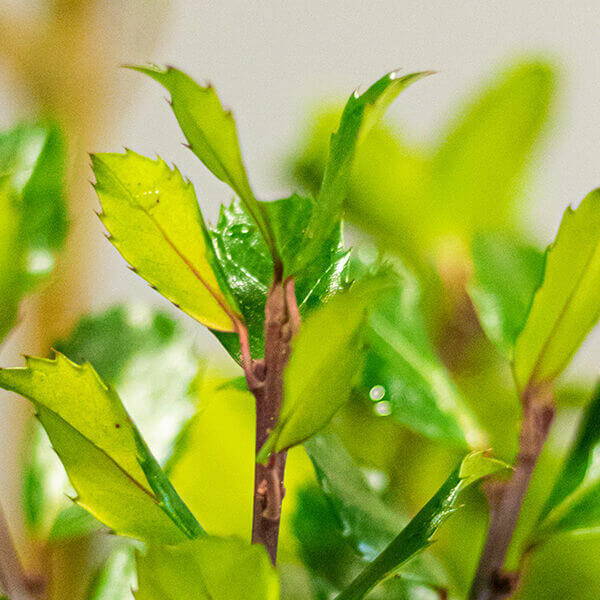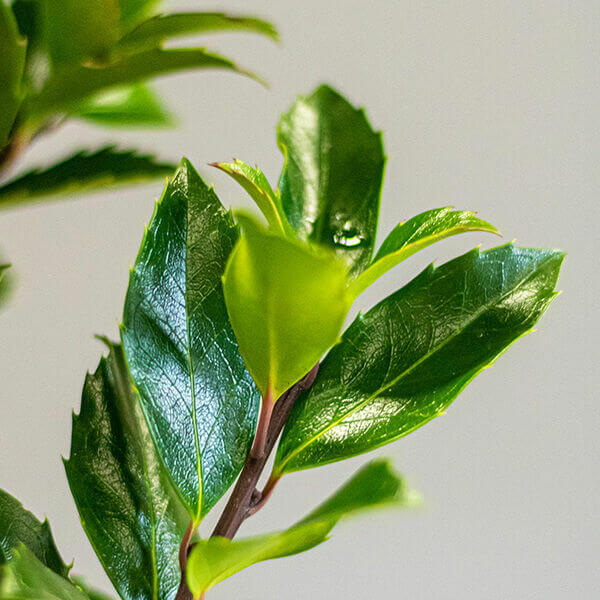Hedge Plants For Summer Color
Drought-tolerant Hedging Plants
Enhance your garden's allure with lavish hedge varieties such as Yew (Taxus), Thuja, Laurel, Photinia, and Bamboo, commemorated for their structural integrity and ecological advantages.
Yew and Thuja provide evergreen protection and winter durability, while Laurel uses rapid development and broad, aromatic leaves.
Photinia adds seasonal appeal with its lively red foliage, and Bamboo lends a low-maintenance, peaceful atmosphere.
These hedges improve air quality, minimize sound, and create tranquil, private areas.
Appropriate planting, spacing, and upkeep ensure vigorous development and eco-friendly harmony.
Explore how these rich ranges can raise your garden's appeal and well-being.
Key Takeaways
Change Your Garden With Lush Hedge Ranges
- Select Yew for its thick, evergreen growth and unrivaled longevity.
- Select Laurel for its quick development and broad leaves, making sure fast privacy.
- Choose Photinia for its vibrant seasonal foliage, which turns a striking dark red.
- Use Bamboo for a low-maintenance, winter-hardy hedge with visual appeal.
- Area plants 2-3 per meter and prune frequently for optimum growth and health.
Popular Hedge Plants
When transforming a garden with lush hedge varieties, it's vital to consider popular hedge plants such as Yew, Thuja, Laurel, and Photinia due to their distinct qualities and benefits.
Yew (Taxus) is highly esteemed for its longevity and dense, green growth, making it a prime choice for sustaining landscapes.
Thuja is kept in mind for its evergreen foliage and robust winter season strength.
Photinia includes seasonal vibrancy with red leaves that darken with time, producing dynamic visual appeal.
Laurel provides rapid growth and aromatic, broad leaves, perfect for fast personal privacy.
Furthermore, Bamboo is an outstanding choice for ambiance, using a low-maintenance, winter-hardy alternative that improves the garden's aesthetic with its stylish, swaying canes.
These choices accommodate a variety of horticultural needs and choices.
Advantages of Garden Hedges
Garden hedges offer a multitude of advantages, making them an important addition to any landscape. These natural barriers are affordable to implement and supply considerable wind protection, boosting air flow and contributing to sound reduction. The thick foliage of hedges like Thuja and Beech guarantees privacy by blocking visibility, developing a remote and serene environment.
Hedges likewise play an essential role in microclimate regulation, offering a stable environment that promotes plant growth and lessens temperature variations. Their elaborate leaf structures filter toxins, improving air quality and adding to a healthier garden community.
Additionally, hedges master sound reduction, soaking up and deflecting sound waves to lower ambient sound levels. This dual performance of providing both acoustic and visual privacy improves the total tranquility and aesthetic appeal of any garden.
Planting and Upkeep Tips
For a successful hedge, precise preparation of the planting location is crucial. Guarantee the soil has correct pH and drainage to support strong root development.
Area the plants properly for the chosen species. Water the hedge often throughout its preliminary growth phase, adjusting as required with seasonal modifications.
Carry out a systematic insect control and illness avoidance strategy, using organic or chemical treatments when needed. Routinely check for aphids, mites, and fungal infections.
Apply mulch to retain moisture and suppress weeds. Seasonal pruning promotes dense development and air blood circulation, necessary for plant health.
Following these standards will assist you cultivate a vibrant, well-kept hedge that improves the charm of your garden.
Spacing and Cutting Guidelines
Spacing and Trimming Guidelines
Proper spacing and trimming are crucial for cultivating healthy, visually appealing hedges. Adequate spacing ensures each plant gets enough nutrients, light, and air flow.
Follow these standards for ideal hedge upkeep:
- Spacing: Position hedge plants 2-3 plants per meter to motivate robust growth.
- Pruning Methods: Regular pruning is important for maintaining desired hedge height and shape. Trim new development in summer season and cut down older wood throughout winter season.
- Seasonal Care: Change cutting schedules and techniques according to seasonal requirements to ensure plant health.
- Hedge Height: Routinely monitor and cut to preserve the preferred hedge height and achieve uniform aesthetics.
Complying with these actions will guarantee your hedge flourishes, improving both the appeal and performance of your garden.
Choosing the Right Hedge
Picking the Right Hedge
Choosing the suitable click here hedge involves evaluating factors such as mature height, foliage density, and ecological resilience. Effective hedge plant choice requires understanding each species' development qualities and site-specific adaptability.
For instance, Yew (Taxus) provides exceptional longevity and dense growth, while Thuja is noteworthy for its winter strength. Additionally, considering upkeep requirements is important; fast-growing species like Laurel or Privet need regular cutting, whereas low-maintenance choices like Bamboo or Ivy may be more suitable for those looking for minimal maintenance.
Environmental elements such as soil type, light availability, and moisture conditions need to also assist the selection procedure. This mindful method makes sure the chosen hedges will prosper, supplying both practical and aesthetic benefits to the garden landscape.
Delivery and Planting Suggestions
To ensure your hedge plants flourish, they need to be delivered by specialized couriers and planted immediately upon arrival.
Follow these essential steps for successful planting:
- Soil Preparation: Improve the soil with natural matter to improve drain and nutrient material.
- Planting Depth: Produce a trench twice the width and equivalent to the depth of the root ball.
- Watering Techniques: Water thoroughly after planting, keeping the soil regularly wet but not filled.
- Mulching: Use a layer of mulch to maintain moisture and suppress weeds.
Client Assistance and Service
Offered the crucial role of timely support in horticultural pursuits, our client support group is offered 6 days a week through telephone, e-mail, and social networks to use skilled guidance and quickly attend to any issues. Their commitment to fast response times ensures customer complete satisfaction by fixing inquiries associated with plant health, ideal planting techniques, and maintenance schedules.

This detailed support group, strengthened by an excellent 9.3/ 10 consumer rating, highlights our dedication to improving the gardening experience for every single customer.
Frequently Asked Questions
For How Long Does It Take for Hedge Plants to Develop?
Hedge plants usually need one to 3 years to become fully established, with the exact duration varying by species and growing conditions.
Effective care during this crucial period is essential for robust growth. Constant watering, alert weed control, and proper fertilizer application are critical in promoting strong root development.
For example, fast-growing species like Laurel might develop more rapidly, while slower-growing varieties such as Yew might take longer. Diligent upkeep accelerates the facility procedure, leading to dense and healthy hedges.
What Are the Best Hedge Plants for Personal Privacy?
The question of the very best hedge plants for personal privacy includes assessing evergreen and deciduous options.
Evergreen hedges like Thuja, Laurel, and Cypress provide year-round protection, guaranteeing continuous personal privacy.
On the other hand, deciduous hedges such as Beech offer seasonal privacy, shedding leaves in colder months.
Secret upkeep suggestions for personal privacy hedges include regular cutting, fertilizing in spring, and appropriate spacing-- generally 2 to 3 plants per meter.
Additionally, constant watering and persistent weed elimination are vital for promoting healthy, thick growth.
Can Hedge Plants Attract Wildlife to My Garden?
Yes, hedge plants can draw in wildlife to your garden by providing necessary benefits like shelter, food, and nesting sites, thereby boosting local biodiversity. For circumstances, yew, holly, and laurel are outstanding for bring in birds, while ivy supports a variety of pests.
However, it's crucial to note that there are some disadvantages, such as increased upkeep to manage insects and regular upkeep. Thoroughly selecting and preserving hedge ranges can help balance these advantages and drawbacks, ultimately promoting a sustainable and dynamic environment in your garden.
Are There Any Flowering Hedge Plants Available?
Yes, there are flowering hedge plants offered that can boost the beauty of your garden.
For example, Elaeagnus, likewise called Olive Willow, produces aromatic white flowers in the fall, including a touch of elegance.
Photinia, another popular choice, showcases dynamic red leaves that grow into an abundant green, creating a dynamic visual effect throughout the seasons.
To guarantee these plants grow, it's important to practice correct pruning strategies and seasonal upkeep, such as trimming new growth in the summertime and cutting down in the winter season.
These procedures will assist keep the health and aesthetic appeal of your flowering hedges.
How Do I Avoid Pests in My Hedge Plants?
To prevent pests in hedge plants, employ natural pest control approaches and maintain correct hedge care. Present advantageous pests like ladybugs, which victimize hazardous bugs, to create a balanced community.
Routinely check your hedges for indications of infestation and without delay remove any affected parts to avoid the spread. Ensure the health of your hedges by applying well balanced fertilizers and supplying appropriate water.
Use mulching to keep soil wetness and appropriate spacing to minimize plant stress and promote robust growth. These practices collectively help in lessening insect problems and preserving a healthy hedge.
Conclusion
In essence, selecting the best hedge varieties such as Yew, Thuja, and Laurel can transform any garden into a peaceful haven. These plants provide year-round greenery, boost visual appeal, and deal practical benefits like sound decrease and wind security.
Appropriate planting methods, accurate spacing, constant watering, and seasonal cutting are crucial for ideal growth.
Trusted shipment services and professional customer assistance guarantee a seamless experience from purchase to planting, making it simpler than ever to raise your outdoor area.
Garden hedges provide a wide range of benefits, making them an important addition to any landscape. These natural barriers are affordable to implement and supply considerable wind defense, improving air circulation and contributing to sound reduction. The thick foliage of hedges like Thuja and Beech ensures personal privacy by obstructing presence, creating a remote and serene environment.

Pruning Strategies: Routine pruning is vital for preserving preferred hedge height and shape. Trim brand-new development in summertime and cut back older wood during winter.